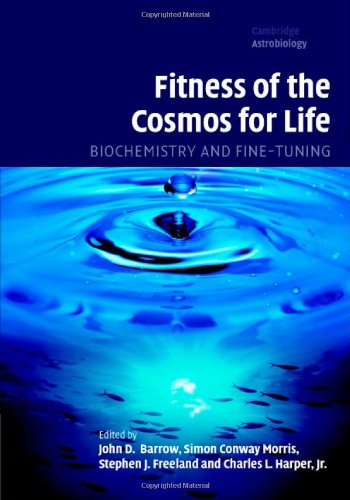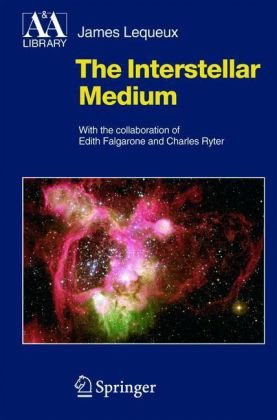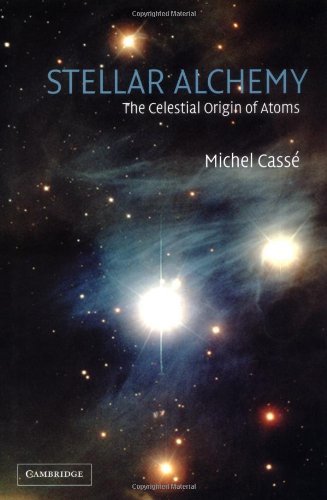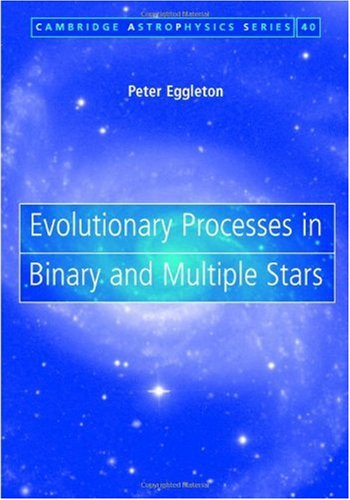J.E Dyson, D.A Williams0750303069, 9780750303064, 9780585368115, 075030460X
Table of contents :
The Physics of the Interstellar Medium, Second Edition……Page 1
Contents……Page 3
Preface to the second edition……Page 7
Useful tables……Page 9
1.1 Galaxies and the Galaxy……Page 11
1.2 Evidence for matter between the stars……Page 15
1.3 Preview……Page 16
1.4 Units……Page 17
2.2.1 Introduction……Page 18
2.2.2 Line shapes……Page 19
2.2.3 Measurement of absorption and emission lines……Page 22
2.2.4 Carriers of interstellar lines……Page 26
2.3 Continuum radiation……Page 31
2.4 Interstellar extinction……Page 34
2.5 Some regions identified: interstellar clouds……Page 35
Problems……Page 37
3.2.1 How do gas clouds cool?……Page 38
3.2.2 Cooling by ions and atoms……Page 39
3.2.3 Cooling by molecules……Page 40
3.3.3 Heating by cosmic rays and X-rays……Page 42
3.4.1 The formation of interstellar molecules: the problem……Page 45
3.4.2 Ion-molecule and neutral exchange reactions……Page 47
3.4.3 Reaction networks……Page 49
3.4.4 Ion-molecule chemistry in dark clouds……Page 52
Problems……Page 53
4.1.2 Extinction……Page 54
4.1.3 Polarization……Page 57
4.1.4 Scattered light……Page 58
4.1.5 Solid state spectral lines……Page 59
4.2.1 Introduction……Page 60
4.2.2 Application to the interstellar medium……Page 62
4.3.1 Formation……Page 64
4.3.2 Destruction……Page 65
4.4.1 Temperature……Page 66
4.4.2 Grain electric charge……Page 67
4.5 Grains as heating or cooling agents in interstellar gases……Page 69
4.6.1 The rate of H2 formation on grain surfaces……Page 70
4.6.2 H2 formation on grains……Page 71
4.6.3 Grains as sites for ice deposition……Page 72
Problems……Page 73
5.1 Introduction……Page 74
5.2.2 Basic physical processes……Page 75
5.2.3 The particle temperatures……Page 76
5.2.4 The recombination of protons and electrons……Page 77
5.2.5 The ionization of hydrogen……Page 78
5.2.7 How sharp-edged are nebulae?……Page 80
5.2.8 The temperature of a pure hydrogen nebula……Page 82
5.3.1 Forbidden lines……Page 83
5.3.2 The excitation of forbidden lines……Page 85
5.3.3 The distribution of ions of heavy elements in nebulae……Page 87
5.4 Radio-frequency spectra of nebulae……Page 89
5.4.1 The radio-frequency continuum of a nebula……Page 90
5.4.2 Radio-frequency lines from a nebula……Page 91
5.5.2 The determination of electron densities……Page 94
Problems……Page 95
6.1.2 Conservation principles……Page 99
6.1.3 Conservation of mass……Page 100
6.1.4 Conservation of momentum……Page 101
6.1.5 Conservation of energy……Page 104
6.2 Sound waves and the propagation of disturbances in gases……Page 105
6.3.1 Shock waves……Page 107
6.3.2 Properties of shock waves: the jump conditions……Page 109
6.3.3 What the Rankine-Hugoniot conditions tell us……Page 111
6.3.4 Density, pressure and temperature changes across a shock……Page 114
6.3.5 Results in a fixed frame of reference……Page 115
6.4.1 Cooling processes in shock-excited gas……Page 116
6.4.2 Cooling times and cooling distances behind shock waves……Page 118
6.4.3 Isothermal shock waves……Page 119
6.5 Shock waves with magnetic fields……Page 121
Problems……Page 123
7.1.1 Introduction……Page 124
7.1.3 The velocity of the ionization front……Page 125
7.1.4 The radius of the ionization front……Page 126
7.1.5 Results of the model……Page 127
7.1.6 The final stage of evolution of an ionized region……Page 128
7.1.7 Assumptions concerning the intermediate stages of evolution of the ionized region……Page 129
7.1.8 Intermediate evolution: the model……Page 131
7.1.9 Does the Stromgren sphere reach pressure equilibrium?……Page 132
7.1.10 Conversion efficiency for stellar UV to kinetic energy……Page 133
7.2.1 Introduction……Page 134
7.2.3 The regions of the flow pattern……Page 135
7.2.4 A simple model……Page 137
7.2.5 Efficiency of conversion of wind kinetic energy to gas kinetic energy……Page 139
7.2.6 Does the wind impact on ionized gas?……Page 140
7.3.1 Introduction……Page 141
7.3.2 A simple model of the supernova explosion……Page 142
7.3.3 Radius and expansion velocity of the supernova bubble: the energy- conserving phase……Page 143
7.3.4 Radius and expansion velocity of the thin shell: the momentum- conserving phase……Page 144
7.3.5 Numerical estimates……Page 145
7.3.7 The very early stages of supernova remnant evolution……Page 146
7.4.1 Diffuse neutral clouds……Page 147
7.4.2 The motion of diffuse clouds……Page 148
7.4.3 The production of coronal gas……Page 149
7.5 The effects of groups of massive stars on the interstellar medium of galaxies……Page 150
Problems……Page 152
8.1.1 The equilibrium of a single cloud……Page 153
8.1.2 The collapse of an isolated gas cloud and spontaneous star formation……Page 155
8.1.3 Induced star formation……Page 158
8.2.1 Infrared sources……Page 160
8.2.2 Large scale flows in star forming regions……Page 161
8.2.3 Dynamics of momentum driven flows……Page 162
8.2.5 Herbig-Haro objects……Page 164
Problems……Page 167
Answers to problems……Page 168







Reviews
There are no reviews yet.